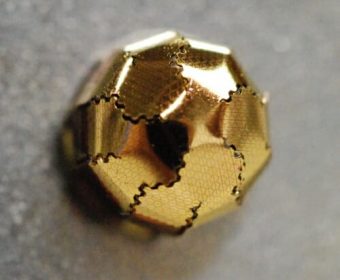- Homepage
- Technology
- What is the New Wi-Fi EasyMesh Standard?
What is the New Wi-Fi EasyMesh Standard?

Will Wi-Fi EasyMesh Extend your Wi-Fi range?
The Wi-Fi EasyMesh standard is said to offer Wi-Fi coverage to large areas as compared to a single router. There could be many areas in your own home which do not receive Wi-Fi coverage. Here is where the Wi-Fi EasyMesh comes in to solve the problem. This offers greater coverage than the traditional Wi-Fi extender.
As of now, the manufacturers have their own Wi-Fi network. Google, Linksys, Netgear, D-Link and Eero have their own systems and have not yet signed up to use the Wi-Fi EasyMesh standard.
What exactly is the Wi-Fi EasyMesh and how are they useful in solving Wi-Fi issues?
The router that we use has only a limited coverage. In your homes or at your place of work, if the Wi-Fi range is not adequate, it can cause a lot of hindrance. Traditionally, Wi-Fi extenders were used to sort out the problem. There is a disadvantage though, where setting up of these extenders could be complicated and cumbersome. You may also have to create new Wi-Fi network names (SSIDs) for the extended network.If they allow you to do so, then you can configure the different access points by using the same SSID, but the working of the same may not be up to the mark.
Here is where the Wi-Fi EasyMesh comes to the rescue. The Wi-Fi EasyMesh is the same as using a router and several Wi-Fi extenders and the set up too is a lot easier. The Wi-Fi EasyMesh units need to be plugged through the entire area and then follow simple steps in the connected smartphone app. The Wi-Fi EasyMesh units then form a Wi-Fi network and communicate with each other. The Wi-Fi will then have a single network with a single name and the devices will connect to the best access point. If there is an additional need of extending the network coverage, then all you need to do is purchase another Wi-Fi unit from the same manufacturer and connect it to the existing Wi-Fi EasyMesh network.
How does the Certified Wi-Fi EasyMesh help make the mesh hardware interoperable?
There are a number of different manufacturers like Google, Linksys, D-Link, Netgear and Eero who have their own Wi-Fi mesh systems. The different mesh Wi-Fi systems cannot communicate with each other and be a part of the same Wi-Fi network. What this means is that if you have one mesh Wi-Fi system, then in future you need to purchase new access points from the same manufacturer. The other option is to dispose all your existing mesh Wi-Fi hardware and purchase a new Mesh Wi-Fi system.
The Wi-Fi Alliance is an industry group that has defined the Wi-Fi standards like WPA3 and 802.11ac. Wi-Fi allows devices from different manufacturers to communicate with each other. But the problem is that each manufacturer has their own mesh Wi-Fi standard and they are not compatible.
The Certified Wi-Fi EasyMesh standard has been introduced to bring in interoperability to the mesh Wi-Fi network. In this case, one of the mesh Wi-Fi devices will be the Wi-Fi EasyMesh controller and all the others will be the Wi-Fi EasyMesh agents.
There is an advantage here with regard to competition. The users need not buy all their hardware from one company and hence the prices for the mesh Wi-Fi units too will come down.
For now, the Wi-Fi EasyMesh has not been adopted by any of the manufacturers. The vendors want the users to buy their mesh Wi-Fi hardware with no competition. Another factor is that the manufacturers feel that they can continuously improve and make changes at their own pace.



